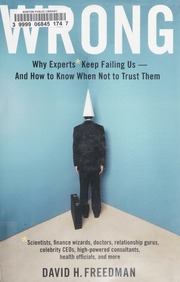Offa's Dyke Walk 3 black sheep (278145664).jpg CC Attribution 2.0
As I have been writing about
for a long time, altruism is often the most potent of motivating forces, and is
the most important motivating force for self-destructive behavior (see the link for examples). However, precisely because altruistic intent
is generally not believed by the people around them, individuals are easily
able to disguise their altruistic motives. Individuals within the context of
the family system can and frequently do use apparent selfishness as cover for altruism.
When we see self-destructive behavior in others, we are often prone to develop the idea that it must be, at some level, personally gratifying. That we should intentionally bring ourselves pain seems to us to make no sense, so we find some way to attribute a net gain to behavior which obviously produces for its perpetrator a net loss. In many psychological theories, however, self-destructive behavior is somehow deemed to be subject to positive reinforcement; that is, reinforcement through pleasure seeking. The negative consequences of hurtful behavior must somehow mask a hidden personal satisfaction.
To say that behavior which brings misery is in reality rewarding, although seeming to make it more comprehensible, is unfortunately a simple contradiction. Such reasoning is reminiscent of the political slogans from the novel 1984. Instead of “war is peace," we have "pain is pleasure." Nonetheless, variations of this idea appear in behaviorism, with its notion of the "hidden reinforcer," and in psychoanalysis, with the ideas of "secondary gain" and "masochism."
Behaviorists have long been acutely aware that self-destructive behavior seems to be reinforced in ways that fly in the face of the usual notions of reward and punishment. Rewards are supposed to satisfy some need, which is another way of saying that they should be gratifying. Despite their correctly seeing that the human mind is an unfathomable black box, so that deciding which stimuli function as rewards and which stimuli function as punishments is supposedly purely a matter of empirical observation, the behaviorist logically knows that pain should always be a punishment.
The physiological purpose of
pain is to signal the organism that it is supposed to avoid whatever is causing
the pain. Comparing human beings to trained animals in laboratory experiments,
the behaviorist expects that behavior that is not rewarded, let alone behavior
that is punished, should be subject to" extinction," which means
just what it says. How do the behaviorists explain this? They look only at the
individual, in isolation, as a pleasure-seeking creature.
One pseudo -explanation based on this principle is that perhaps behavior that appears to be painful in the long run must be pleasurable in the short run. In animal experiments, rewards or punishments that are given immediately after the behavior in question are far more effective in shaping that behavior than are those given after a period of time intervenes. The longer the delay, the less effective the reward or punishment. If human behavior which eventually led to self-destructive consequences were to first lead to some kind of immediate gratification, then the self-destructive consequences could be seen as taking place too long after the behavior in question to function as effective punishment.
Suppose we have a man who continually gets himself fired because he gets a charge out of screaming invectives at his boss whenever his boss annoys him. The behaviorist correctly sees the mind as unfathomable as noted above; he does not pretend to be able to explain why this individual finds having a tantrum especially rewarding while someone else might not enjoy it so much.
This explanation would make a lot of sense if humans functioned at the same level as rats, or even dogs; but to apply it to people is problematic. As with some family systems theories, it implies that people are unable to think about the longer-term consequences of their behavior, no matter how frequently they experience them!
There is one sense in which self-destructive behavior is "gratifying." It helps to reduce the uncomfortable sensation of existential groundlessness which is brought on whenever we put our own needs over those of our family system. In this sense, such behavior functions as a negative reinforcement for itself. Negative reinforcement is, in behaviorist language, reinforcement caused by the termination of punishing stimuli. When we make a sacrifice to the collective, no matter how painful, our sense of groundlessness decreases, and we temporarily feel more comfortable about that - despite our own personal misery. Existential pain seems to us to be the greater of two evils.











